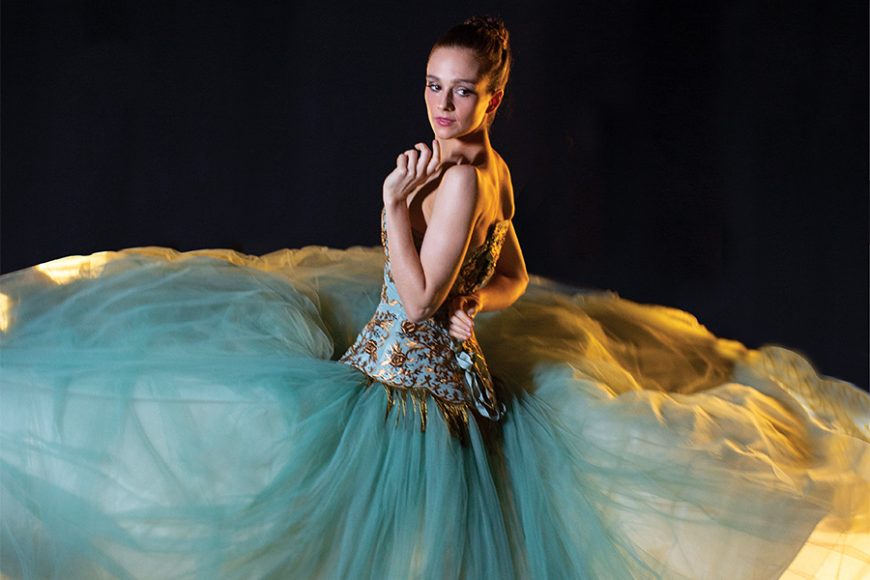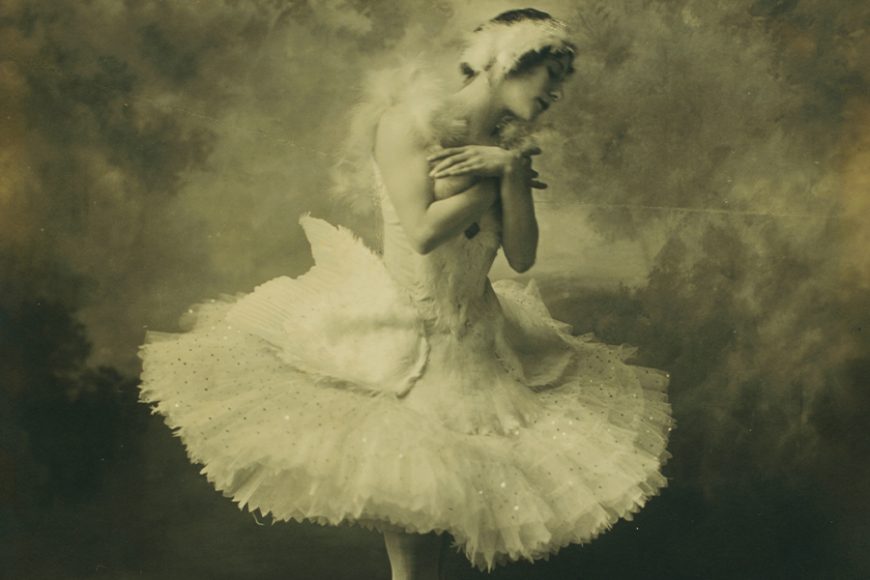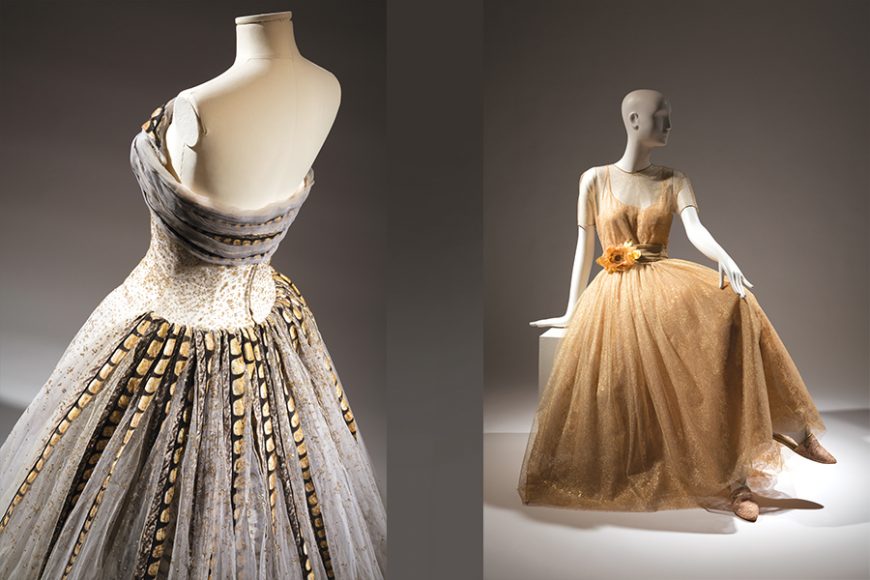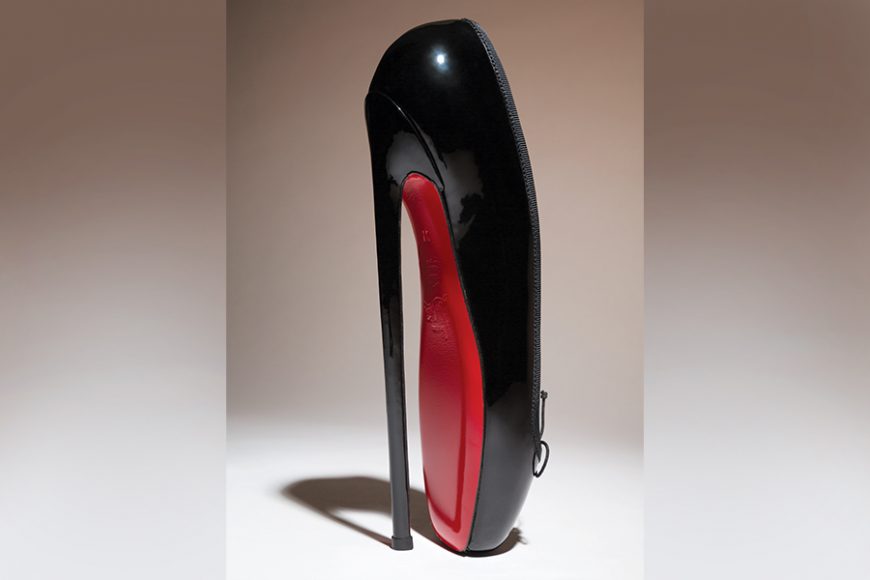When Serena Williams steps out on a tennis court dressed in one of her tutu outfits, she reminds us that ballet and fashion have had a reciprocal relationship dating from the art form’s origins in the Renaissance.
Indeed, in the following Baroque period, France’s King Louis XIV would prove to be both a dazzling dancer and fashionisto, performing the role of Apollo and living up to his sobriquet as “the Sun King.”
Now, a new exhibit plumbs the symbiosis between ballet’s central figure, the ballerina, and fashion designers in the half-century between the 1930s and ’80s. “Ballerina: Fashion’s Modern Muse,” at The Museum at the Fashion Institute of Technology Feb. 11 through April 18, features some 90 objects from the museum and such institutions as the New York City Ballet, Dance Theatre of Harlem, the Victoria and Albert Museum, the Museum of London and the Fashion Museum Bath, as well as from the collection of fashion editor Hamish Bowles, that consider the pas de deux between fashion and the dance.
Certainly, fashion has drawn inspiration from the ballerina’s sylph-like figure as well as the corseted bodices; short, classical tutus; long, full tulle skirts popularized in the 19th century’s Romantic period; tights; leotards; ballet slippers; and beribboned toe shoes that have shown off that attenuated body. The exhibit includes spectacular gowns like Pierre Balmain’s ladylike painted white tulle debutante gown with painted “velvet” feathers from spring 1960 and Charles James’ deliciously diabolical black silk, synthetic net and satin evening gown from 1954, redolent of John Singer Sargent’s “Madame X.”
Meanwhile, leotards and tights — the uniform of George Balanchine’s black-and-white neoclassical works for City Ballet like the groundbreaking “Agon” (1957) — get their due in the actionwear (knitted sweaters, legwarmers and wrap skirts) of Claire McCardell and ballet dancer-turned — designer Vera Maxwell, among others. And ballet slippers are the focal “pointe” of Christian Louboutin’s black patent leather “Fetish Ballerine” shoes (2014) and Victor de Souza’s clever black high-heel toe shoes. They along with a de Souza black ballerina dress are modeled by City Ballet principal Lauren Lovette in a photograph by Isabel Magowan. Lovette also models the “Angelique” gown by Maggie Norris Couture in another Magowan photo (2012). Both speak of the idea that while fashion has been influenced by dance, ballet has in turn been influenced by fashion.
Perhaps nowhere is this more striking than in the clothes worn by Royal Ballet prima ballerina Margot Fonteyn (1919-1991), who was as gracious in appearance and manner as she was onstage. The show’s dozen or so selections from her estimable wardrobe reflect the sweep of time. In the postwar years, she was one of those Englishwomen — Princess Margaret was another — who looked to the demure romance of Parisian couture, particularly Christian Dior, whose fitted black “Daisy” suit and “Goeman” coat and strapless off-white silk-satin “Marigny” evening dress for Fonteyn echoed the ballerina silhouette.
Her always-impeccable dancing would nonetheless be reinvigorated by her partnership with Soviet defector Rudolf Nureyev during the Swinging ’60s, and her Yves Saint Laurent mini shifts — abstracted, sequined or feathered — reflected that new spiritedness and freedom.
The exhibit also includes the ballerina’s costume for her role as Princess Aurora in “The Sleeping Beauty,” originally designed by Oliver Messel in 1946. It, along with Cristóbal Balenciaga’s pink silk tulle and satin, silver-embroidered evening dress for fashion entrepreneur Hattie Carnegie (1950), informed Mark Happel’s reimagined white silk satin, synthetic net costumes for Balanchine’s “Symphony in C.”
Proving that when it comes to ballet and fashion, it’s hard to know where one leaves off and the other begins.
For more, visit fitnyc.edu.








